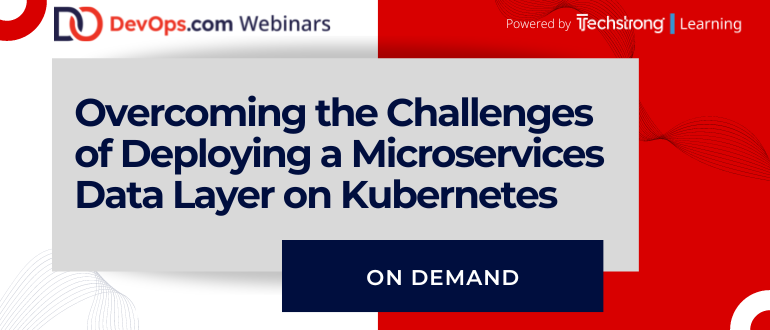Webinar
Think About Your Audience Before Choosing a Webinar Title

Sponsored by Redis
On Demand
Anytime
What You’ll Learn in This Webinar
Microservices architectures can be a game-changer for business agility and incremental application modernization. The pandemic has accelerated the motivation to replatform legacy apps as cloud-native microservices; however, so have the challenges as modern applications need to respond in real-time. According to IDC’s InfoBrief “The Impact of Application Modernization on the Data Layer”, 89% of the 300 North American enterprises surveyed are already using microservices and 66% leveraged Kubernetes. That might all sound great for microservices but the same enterprises also said microservices only accounted for 17% of their application portfolio due to a litany of data management issues when deploying at scale.
Join us as we explore how Redis Enterprise real-time data platform helps navigate the trade-offs and complexities of deploying at scale including a demonstration of a retail-banking microservices deployment using the Redis Enterprise Operator for Kubernetes on Red Hat OpenShift.
Key Takeaways:
- Learn best practices for building microservices leveraging a real-time data layer
- How DevOps teams can easily manage, administer and deploy Redis clusters on Kubernetes
- The key capabilities of cloud-native Redis Enterprise that make it the ideal data platform for real-time microservices-based applications
Allen Terleto
Field CTO - Redis
Allen is Field CTO at Redis where he helps organizations reimagine how quickly they can process, analyze, predict, and take data-driven actions. As the home of Redis, the most popular open source database, Redis provides a competitive edge to global businesses with Redis Enterprise by delivering superior performance, multi-model capability, unmatched reliability, and the best total cost of ownership across on-premise, hybrid, and multi-cloud environments.Allen has broad technical and business experience with a specialization in distributed, low-latency, and high-throughput mission-critical systems. He is a trusted advisor to Redis customers which include leading global banking institutions, fintechs, neobanks, and financial service providers.He received his Advanced Graduate Certificate in Enterprise Risk Management from New York University (NYU) along with his Bachelor’s Degree in Computer Science and holds both an MBA and MSIS from Stevens Institute of Technology.
Lars Rosenquist
Manager Partner Solution Architects - Redis
Lars Rosenquist is an experienced software development veteran, with over 20 years of experience in the industry. Before joining Redis in February 2021 he worked for three years at Pivotal/VMware as a Platform Architect for Cloud Foundry and before that he spent around two decades in software product development, both nationally and internationally, focusing mostly around (but not limited to) Java and Spring.








